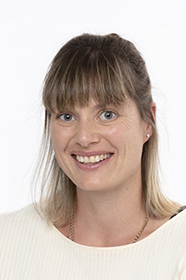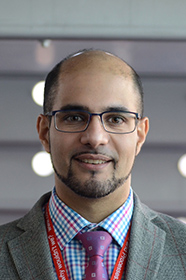Improving rehabilitation and clinical outcomes for musculoskeletal conditions

We are a team of researcher-clinicians concerned about life-long hip health.
Our team collects data for research purposes about infants, children and adolescents who have various conditions of the hip, tracking their treatment and wellbeing through to skeletal maturity at about the age of eighteen.
Our research registries aim to provide insight about the immediate and long-term efficacy of current and future treatments, and to act as a source of new research questions which, if explored, could improve life-long outcomes for people who experience early-life hip disorders.
We recognise the value of longitudinal data, and so in the future we aim to work closely with the NZOA Joint Registry. The Joint Registry records arthroplasty surgeries (joint replacements), which tend to occur in middle and late life.
Learn more about the NZOA Joint Registry
Hip Kids data and research
Our registries enable us to collate a comprehensive log of information for each patient, which can be used for retrospective and prospective research into the conditions and their treatment. Information collected, depending on the registry, comprises demographic information, patient and family histories, the presence of risk factors, clinical and surgical information, ultrasound or radiographic images, diagnostic and Severin classifications, the Modified Harris Hip Score, as well as a range of patient-reported outcome measures (PROM).
PROM used includes PROMIS for Pain Interference, Pain Intensity, Physical Activity, and Global Health Scale; the WOMAC Osteoarthritis Index; the HOOS JR; and the UCLA Score for Activity.
Patients in our registries are recruited from the Canterbury District Health Board service area, which includes the east coast of the South Island from Kaikoura District in the north, to Ashburton District in the south, as well the Chatham Islands. And because of a formal partnership agreement between the Canterbury and West Coast DHBs, we also recruit patients from the West Coast of the South Island.
We have only just begun – check back often for news of upcoming publications about the research made possible by our registries.
Our use of REDCap
REDCap is a secure electronic data capture system that is specifically designed to support both online and offline data capture for research studies and surgical operations.
In using REDCap we affiliate ourselves with paediatric hip researchers worldwide. Paediatric hip registry research using REDCap started in 2018 in Canada, and by 2021 when we started our registries, there were 28 other research centres using the same technology. We began with two studies – our IHDR and SLIP registries – with the intention of a Perthes disease registry soon to follow.
International Hip Dysplasia Registry (IHDR)
Developmental Dysplasia of the Hip (DDH) is a condition where the ball and socket joint of the hip does not properly develop in babies and young children. It is sometimes called hip dysplasia or dislocation of the hip. This is the most common of paediatric hip conditions, with 1-3% of all new-borns diagnosed at birth.
Our IHDR registry establishes a comprehensive database of clinical, treatment, and functional or outcome information about patients who are diagnosed as babies or young children with DDH.
The registry includes data collected from patients who experience the full DDH spectrum of abnormalities, increasing study numbers, and offering the potential to improve current screening practices and follow-up on risk factors for over 1,000 patients within the first two years of operation. In the longer term, we aim to develop a novel understanding of the factors involved in the condition and identify best treatment practices. Having a longitudinal approach offers the opportunity to understand the long-term impact of DDH and treatments on the patient's quality of life and function.
Patients range from new-borns to ten years of age at their inclusion in the registry, allowing for the capture of data from earlier missed or late-presenting cases. Follow up of all patients occurs until skeletal maturity, creating a series of dynamic events captured for single patients between the ages of zero to 18 years.
Dr Nikki Hooper is Principal Investigator for the IHDR. Dr Ramez Ailabouni and Sally Rogan also contribute to the working of the registry.
SCFE Longitudinal International Prospective Registry (SLIP)
Slipped capital femoral epiphysis (SCFE) is a hip condition that occurs in teens and pre-teens who are still growing. For reasons that are not fully understood, the ball at the head of the femur (thighbone) slips off the neck of the bone in a backwards direction. SCFE is the most common hip disorder in adolescents.
By participating in a multi-centre international prospective registry of patients with SCFE we aim to gain insight into the treatment and management of this condition. Our SLIP registry will help us make a comprehensive examination of clinical, functional and radiographic outcomes of various surgical treatment options and track patient outcomes over time.
One of our particular objectives is to determine the epidemiology of SCFE in the Canterbury population including ethnic differences in incidence, severity and outcomes. This is especially relevant for Māori.
Patients range from seven to 18 years of age when recruited into the study. After skeletal maturity, we transition to collecting patient-reported outcome measures and radiographic data on five-yearly intervals from the age of 20, using an outpatient service model. Eventually we aim to link the SLIP registry to the NZOA Joint Registry, which records technical information about total hip and knee replacement surgeries performed in New Zealand.
Dr Ramez Ailabouni is Principal Investigator for the SLIP registry. Dr Nikki Hooper and Sally Rogan also contribute to the working of the registry.
Our people
Dr Nikki Hooper
Dr Nikki Hooper works as a Senior Clinical Lecturer for the University of Otago's Department of Orthopaedic Surgery and Musculoskeletal Medicine located at the Christchurch Hospital campus. She is also an Adult and Paediatric Orthopaedic Surgeon for the Canterbury District Health Board. Dr Hooper is the Principal Investigator for the IHDR registry and provides expertise into the running of the SLIP registry.
Bess Kew
Bess is the co-ordinator for the paediatric hip registries and is employed as an Assistant Research Fellow by the University of Otago. She splits her time between the Department of Orthopaedic Surgery and Musculoskeletal Medicine and the Department of Psychological Medicine.
Dr Ramez Ailabouni
Dr Ramez Ailabouni is an Adult and Paediatric Orthopaedic Surgeon for the Canterbury District Health Board and runs a private practice operating out of St George's Hospital. Dr Ailabouni is the Principal Investigator for the SLIP registry and provides expertise into the running of the IHDR registry.
Find us
Our Hip Kids team can be found in the Department of Orthopaedic Surgery and Musculoskeletal Medicine on the lower ground floor of the Christchurch Hospital – Wednesdays are a good day to try. The rest of the time we are on the move working in our various other clinical, teaching and business roles.
Find the Christchurch Hospital at 2 Riccarton Avenue, Christchurch.
Contact us
Dr Nikki Hooper
Email nikki.hooper@otago.ac.nz
 Dr Nikki Hooper
Dr Nikki Hooper Dr Ramez Ailabouni
Dr Ramez Ailabouni